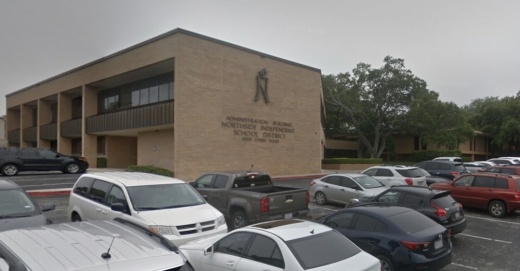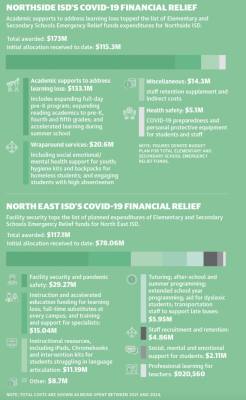Two North San Antonio school systems are using some of their federal COVID-19 relief funds to provide their employees with a one-time retention stipend.
The North East ISD board Feb. 14 approved about $4.3 million in Elementary and Secondary School Emergency Relief III funds for retention incentives for eligible district employees.
Northside ISD trustees Feb. 22 approved spending $14.4 million in ESSER III funds on a one-time retention supplement for active full-time or part-time employees.
The $1.9 trillion American Rescue Plan Act, which President Joe Biden signed into law in March 2021, contains a third round of ESSER III funds totaling $122 billion for schools nationwide.
North East ISD was awarded $117.1 million in ESSER III money, having received $78.1 million to date with the rest arriving at an undetermined time, NEISD said.
NEISD officials said they determined about $4.3 million in ESSER funding was available to permit a one-time retention supplement for the second semester of the 2021-2022 school year.
Superintendent Sean Maika said the stipend is one way to extend gratitude to school district employees for facing various challenges during a pandemic that is entering its third year.
NEISD’s retention supplement is being provided to eligible employees, including $575 for full-time teachers and librarians, and a 1% supplement of staffers’ annualized pay grade midpoint.
“Our employees are committed to doing everything they can to meet the needs of our students,” Maika said. “This retention incentive is one small way we can show our appreciation to them for making a positive and lasting difference.”
Per federal rules, school systems receiving ESSER grants must direct at least 20% of their allocation toward countering learning loss, the academic effect of lost instruction time. School systems are required to review and update their ESSER spending plans this June.
NEISD officials said they are spending the rest of their disbursement in different ways, including adding math accelerators and interventionists, improving heating/ventilation/air conditioning systems and funding dyslexia intervention educators.
“There are specific guidelines we must follow when it comes to utilizing ESSER funds,” NEISD Executive Director of Communications Aubrey Chancellor said. “Each school district needs to determine what their immediate needs are and where best these funds should be spent.”
From its $173 million award, Northside ISD said it is using $14.4 million on a one-time retention supplement, including $1,000 for full-time staff, $750 for long-term substitute teachers, and $500 for part-time staff and substitutes who have worked at least 40 days.
Janis Jordan, NISD’s deputy superintendent for curriculum and instruction, said federal rules allow ESSER money to be used on certain things, including addressing learning loss, safely reopening and operating campuses, and extending mental and emotional support for students and their families.
“ESSER funds are being used to focus on learning gaps, but they have been used to also secure extra instructional equipment,” Jordan said.
District 3 Trustee M'Lissa Chumbley said the ESSER funds provided NISD a chance to thank employees who have met personal and professional challenges caused by the pandemic.
“We have been talking since COVID began about how to let our teachers know how much we appreciate the work they do, and we recognize how hard it is,” Chumbley said.






